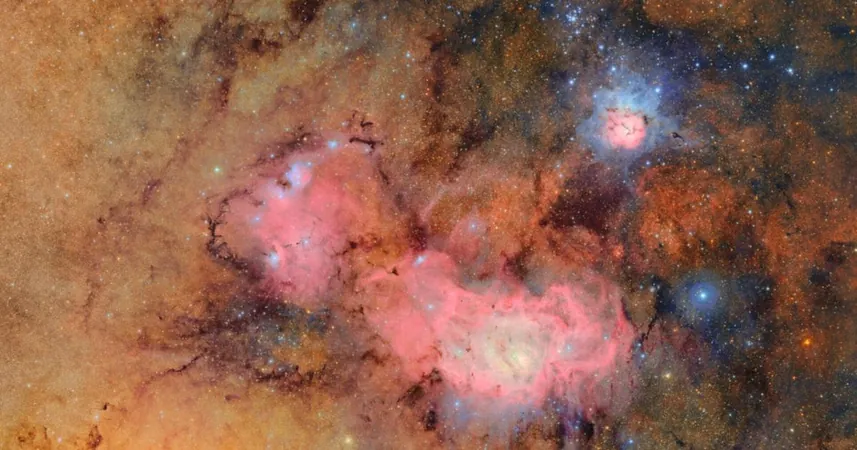
Unveiling the Cosmos: First Stunning Images from the World's Largest Digital Camera
2025-07-01
Author: Arjun
Introducing the Cosmic Powerhouse
Get ready to have your mind blown! The world’s largest digital camera, akin to the size of a compact car, has just unveiled its breathtaking first images. Meet the Legacy Survey of Space and Time (LSST) camera, an astonishing piece of technology that weighs nearly 2,800 kilograms and boasts a jaw-dropping 3,200-megapixel resolution!
Chilean Observatory: A Gateway to the Stars
Positioned high above the Eclipsing Andes at the NSF–DOE Vera C. Rubin Observatory in Chile, this colossal camera has already embarked on an incredible journey, capturing millions of galaxies and stars in our very own Milky Way, plus thousands of asteroids—all in just over 10 hours of initial testing!
A Cosmic Time-Lapse Like Never Before
The stunning images are just the tip of the iceberg. They provide a tantalizing glimpse into the observatory’s ambitious ten-year mission to craft an ultra-wide, ultra-high-definition time-lapse record of the universe, scanning the starry skies night after night.
Mind-Blowing Scale and Detail
Imagine this: Each image taken by the LSST camera is equivalent to covering an area as vast as 45 full Moons! The detail is so extraordinary that displaying a single image at full scale would demand a staggering 400 ultra-high-definition TVs!
Mapping the Unknown: A Decade of Discovery
Future projections are nothing short of astronomical! Over the next decade, the observatory anticipates cataloging around 20 billion galaxies and discovering millions of new asteroids, pushing the bounds of our cosmic comprehension to new heights.
Unlocking the Secrets of the Universe
The groundbreaking data collected promises to unravel some of the universe’s deepest mysteries. Scientists will delve into the enigmatic properties of dark matter and dark energy, explore the Milky Way’s intricate structure, and trace the evolutionary path of our Solar System.
Data Overload: The Numbers Speak Volumes
Brace yourselves for the sheer scale of this project! During its decade-long survey, the Rubin Observatory is set to generate approximately 20 terabytes of data each night, accumulating an additional 15 petabytes in its catalog database. By the end of the ten years, this colossal data processing endeavor will yield around 500 petabytes, featuring billions of objects with trillions of measurements!

 Brasil (PT)
Brasil (PT)
 Canada (EN)
Canada (EN)
 Chile (ES)
Chile (ES)
 Česko (CS)
Česko (CS)
 대한민국 (KO)
대한민국 (KO)
 España (ES)
España (ES)
 France (FR)
France (FR)
 Hong Kong (EN)
Hong Kong (EN)
 Italia (IT)
Italia (IT)
 日本 (JA)
日本 (JA)
 Magyarország (HU)
Magyarország (HU)
 Norge (NO)
Norge (NO)
 Polska (PL)
Polska (PL)
 Schweiz (DE)
Schweiz (DE)
 Singapore (EN)
Singapore (EN)
 Sverige (SV)
Sverige (SV)
 Suomi (FI)
Suomi (FI)
 Türkiye (TR)
Türkiye (TR)
 الإمارات العربية المتحدة (AR)
الإمارات العربية المتحدة (AR)